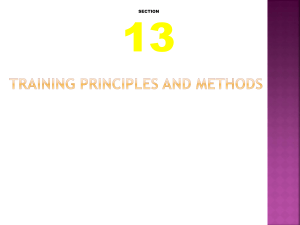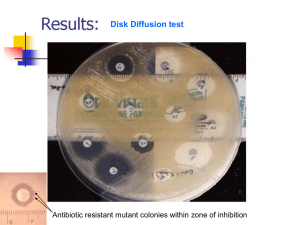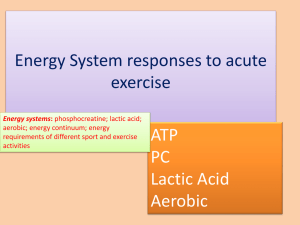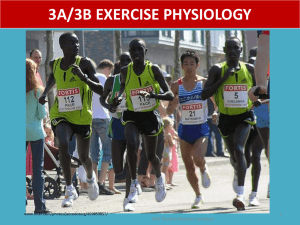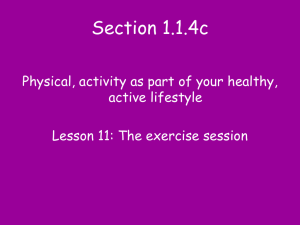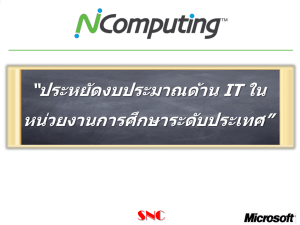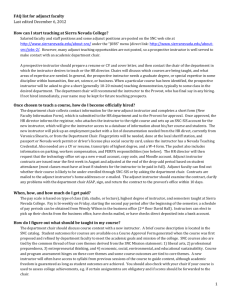Energy Systems/Zones by J Fletcher
advertisement
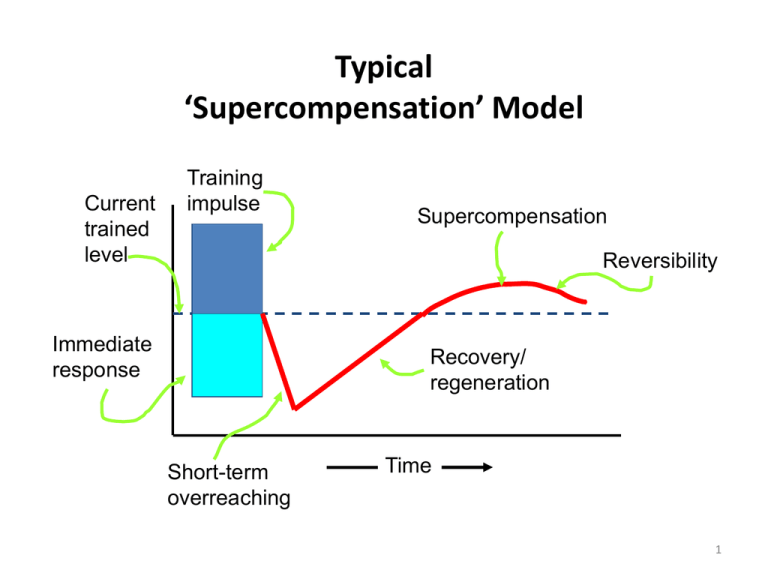
Typical ‘Supercompensation’ Model Current trained level Training impulse Supercompensation Reversibility Immediate response Recovery/ regeneration Short-term overreaching Time 1 Structure 45000 40000 35000 30000 25000 20000 15000 10000 5000 0 1:1 2:1 3:1 Note: Loading increases each Meso (block of Micros) 4 Week Meso = e.g. 3 weeks progressive loading and 1 week recovery = 3:1 4:1 2 0 2 4 6 8 10 12 14 100 90 80 70 60 50 40 30 20 10 0 16 Intensity (%) Intensity (need to define what “intense” is!) Micro-Cycle 3 The “Global Athlete” Optimal Under - performance Competition Sequencing PHYSIOLOGY BIOMECHANICS PSYCHOLOGY TACTICS HEALTH LIFESTYLE SEQUENCE OF TRAINING ( Macro, Meso, Micro ) Overtrained / Under - rested Optimal / Under - performance Overtrained / Under - rested Optimal / Poor Optimal / Illness Competition Analysis Volume Intensity Wt. Train. Psych Non-training Stress Social Confidence Recovery Training Repetition Emotional Stability % Fat Equipment Muscle Fatigue Focus Cognitive Stress Health Sickness Fatigue Work School Finance 4 DJS 99 Variety • Athletes will adapt to a constant stimulus rapidly! Training impulse Short-term overreaching Training impulse Time 5 Individualization • Each athlete will react differently to the same stimulus Training impulse Athlete A Athlete B Short-term overreaching Time Long-term Overreaching/ Over-training 6 Energy Systems: Physiology Jared Fletcher, PhD(c) Human Performance Lab Faculty of Kinesiology University of Calgary SNC 301 Module 15 Energy/Power Output Energetics ATP-CP ANAEROBIC GLYCOLYSIS OXIDATIVE 10 s 30 s 60 s 3 min Time SNC 301 Module 15 15 min+ ATP-CP System Energy/Power Output “Immediate Energy System” • High power • Very low capacity • Time to peak power: <0.5 s • Capacity: 8 – 12 s • Anaerobic Alactic ATP-CP Cr + ATP ADP + Pi + Energy 10 s 30 s 60 s 3 min Time SNC 301 Module 15 15 min+ Energy/Power Output Energetics ATP-CP ANAEROBIC GLYCOLYSIS OXIDATIVE 10 s 30 s 60 s 3 min Time SNC 301 Module 15 15 min+ Recovery of Phosphagens • • • • 0 sec – 15% 1 min - 65% 2 min - 68% 4 min - 72% Harris et al. Pflugers Arch. 367:137-142. 1976 301 Module 15 • • • • 0 sec – 15% 1 min - 65% 2 min - 68% 4 min - 72% Interval Work phase 1-10 sec / 10 -25m Rest phase 10-100 sec (passive) Work : Rest ratio 1:10 Intensity (% max effort) 98-100% Repetitions (number) 4-6 Sets (number) 2-4 Rest between sets 5-10 min light swimming • Reps depend on ability to maintain velocity and form – Quality over Quantity • Need to time them and watch!! • Get feedback from athletes Anaerobic Glycolytic Energy/Power Output “Short-term Energy system” ATP-CP ANAEROBIC GLYCOLYSIS Stored CHO ATP + La- + H+ 10 s 30 s 60 s 3 min Time SNC 301 Module 15 • High Power • Limited Capacity • Time to peak power: >8 s • Capacity: 2-3 mins •Anaerobic Lactic 15 min+ Effect of active recovery on blood lactate removal rates Fletcher and Esau. Effect of cooldown distance on blood lactate clearance in Paralympic Swimmers (in preparation). Interval Work phase 30-120s / 50 – 150m Rest phase 90-360s (active/swimming light) Work : rest ratio 1:3 Intensity (% max effort) 80-85% Repetitions (number) 4-6 Sets (number) 1-4 Rest between sets 5-10 min • Accumulate waste produces throughout the rep • Short recovery promotes ACCUMULATION • “near full” recovery between sets promotes TOLERANCE Aerobic Energy/Power Output “long term energy system” • Low power • Large capacity • Time to peak power: 2-3 mins • Capacity: “limitless” ATP-CP ANAEROBIC GLYCOLYSIS AEROBIC CHO, Fats + O2 ATP + CO2 + H20 10 s 30 s 60 s 3 min Time SNC 301 Module 15 15 min+ MAX • Time to “steady-state” depends on intensity • Above Anaerobic Threshold, steady-state is not attained Energy/Power Output Aerobic Training Zones VO2max Recovery 10 s 30 s 60 s 3 min Time SNC 301 Module 15 Threshold 15 min+ Aerobic Training Zones VO2max Work phase 200 – 500m / 3-10 min Rest phase 3-10 min (active) Work : rest ratio 1:1 Intensity (% max effort) 90 – 95% of max HR – 95 – 105% of VO2max pace Repetitions (number) Accumulate 12 – 25 min Sets (number) 1-3 Rest between sets 10-15 min (active) SNC 301 Module 15 Aerobic Training Zones Threshold Work phase 4-15 min - 400 – 1500m Rest phase Dependent on work interval Work : rest ratio 2:1 – 5:1 (active) Intensity (% max effort) Anaerobic threshold –5% to +10% Repetitions (number) 3-10 Sets (number) 1-3 Rest between sets Variable – active rest SNC 301 Module 15 Aerobic Training Zones Recovery Work phase 10 - 30 min Rest phase n/a Work : rest ratio n/a Intensity (% max effort) <70% Repetitions (number) Continuous Sets (number) n/a Rest between sets n/a SNC 301 Module 15 Energetic Zone Approximate % Best Time Proportion of Work Load to Rest I 60% (5:1) Endurance II 70% (2:1) Endurance with Limited Speed Factor III 80% (1:1) Endurance and Speed Equal IV 90% (1:3) Speed with Limited Endurance Factor V 100% (1:5) Speed Note: Zones will be explained in an activity in the module. Training factors Discussion Topic … What are some ways to organize your group to optimize training? Keep individualization in mind … athletes will do better with attention to their individual needs Influence of maturation... 90 Annual gain in various characteristics of performance capacity of young swimmers Improvement in a year (%) 80 70 60 50 Max anaerobic power (Margaria) 40 Exc CO2 VO2max 30 B[La] post anaerobic exercise 20 10 AnT 0 11 12 13 14 15 16 17 Age (years) Voitenko, 1985 18 19 20 21 Activity #1: Designing a Set Break in to 5 groups – coaches with similar athlete age and competitive level. – Each group will focus on 1 energy system Each group create sample set for their 1 energy system. Each group presents their set to class for discussion and feedback. Activity #2: Designing a Practice Remain in same 5 groups. Each group creates a 2 hour practice that supports the set they created in the previous activity. • e.g. the group who designed a set to train VO2 Max will design a practice based on a VO2 Max main set. Each group presents their practice to class for discussion and feedback. Energy/Power Output Energetics V ATP-CP IV ANAEROBIC GLYCOLYSIS II OXIDATIVE I 10 s 30 s 60 s 3 min Time SNC 301 Module 15 III 15 min+ Recovery and Nutrition SNC 301 Module 16 Influence of dietary CHO and training on Glycogen stores Wilmore and Costill, 1994 Functions of Carbohydrate • Major energy source , particularly in high - intensity activity • Its presence regulates fat and protein metabolism • The nervous system relies exclusively on CHO for energy • Muscle and liver glycogen are synthesized from CHO Glycogen • Limited storage in muscle – Anaerobic Training improves glycogen storage • Replacement takes 12 hours to 3 days depending on type of muscle fiber and rate of depletion (intensity and duration of exercise) • Inadequate replacement will compromise subsequent sessions • Consume CHO rich snack immediately after training (0.8 - 1.2g/kg) SNC 301 Module 15 Glycogen Replacement Workload % VO2max Event Dominant Fuel Dominant Fiber Fuel Time Replacement Time 30-50 Channel Fat I NA NA 50-70 Long distance Fat-Glycogen I 2 Hr 24 Hr 85-100 1500m Glycogen IIA - I < 80 min 12 – 24 Hr 100 800m Glycogen IIA - I 40 min 12 – 24 Hr 110 400m Glycogen IIA – I- IIB 30 min 12 Hr – 3 days 120 200m Glycogen IIA – I- IIB 20 min 12 Hr – 3 days 140 100m Glycogen IIA – IIB 15 min 12 Hr – 3 days >140 25-50m CP/ Glycogen IIB 8 min 30sec/3 days SNC 301 Module 15 Activity #3: Planning a Week Remain in groups from previous activities. Each group creates a weekly plan, for a T2C swimmer, based on the average number of practices the coaches in the group have (max 8). – Plan must show order in which energy system was focused on each practice. (top two) Each group presents their weekly plan to class for discussion and feedback. SNC 301 Module 15 Recovery nutrition Aggressive recovery needed if training more than once per day or training volumes increase Goals: Refuel Repair Re-hydrate SNC 301 Module 15 Recovery nutrition • A.S.A.P. – Insulin independent glycogen synthesis (30-60 mins post Ex.) – Pre-plan and have a portable nutrition source close at hand • Fluids: 150% of lost weight or pale urine. • 0.8 - 1.2g carb/kg (45+grams) in the first hour and then follow training diet. • First snack high on Glycemic Index (GI) then lower GI for later foods. • Protein: 10 - 20g every 2 hrs. SNC 301 Module 16 Glycemic Index of Some Common Foods High G.I. (>85) Glucose Sucrose Maple syrup Honey Bagel Candy Corn flakes Carrots Crackers Molasses Potatoes Raisins Bread Soda SNC 301 Module 16 Med. G.I. (60-85) All-bran cereal Grapes Oatmeal Orange juice Pasta Rice Yams Corn Whole-grain rye bread Baked beans Potato chips Low G.I. (<60) •Fructose •Apple •Applesauce •Cherries •Kidney beans •Chick peas •Lentils •Dates •Figs •Peaches •Plums •Ice cream •Milk •Yogurt •Tomato soup Amount of CHO Highest synthesis occurs with large amounts of CHO 1.0 to 1.2 grams / kg / hour 15 to 60 min intervals for up to 5 hours post exercise Jentjens and Jeukendrup Sports Med 33 (2): 117-144, 2006 SNC 301 Module 16 Practical Tips When appetite is depressed immediately post exercise, there is a preference for drinking fluids rather than solid foods CHO beverages are recommended in the first few hours post exercise Jentjens and Jeukendrup Sports Med 33 (2): 117-144, 2006 SNC 301 Module 16 Dietary Protein Is used for growth, repair and maintenance of body tissues Hemoglobin , enzymes and many hormones are produced from protein RDA for general population - 0.8 g / kg RDA for athletes in heavy training should be approx 2.0 g / kg . This applies to both strength and endurance training Field Testing SNC Swimming Field Tests Pool – 7x200 – 50 dive – 50 kick – 400 kick Dryland Equipment – HR monitor – Stop watches – Clipboard Data collection 7x200 Step Test Date: Name Time Time SC SR HR RPE FS Lactate Feeling Scale Rating of Perceived Exertion Scale 6 7 8 9 10 11 12 13 14 15 16 17 18 19 20 No exertion at all Extremely light Very light Light Somewhat hard Hard (heavy) Very hard +5 +4 +3 +2 +1 0 -1 -2 -3 -4 -5 Very good Good Fairly good Neutral Fairly bad Bad Very Bad FS is a measure of how the athlete feels. Cue: “How did that feel?” Extremely hard Maximal exertion RPE is a measure of how hard the athlete thinks they are working. That is, the total amount of exertion and physical fatigue, combining all sensations and feelings of physical stress and effort. Cue: “How hard did you work?” Data collection

